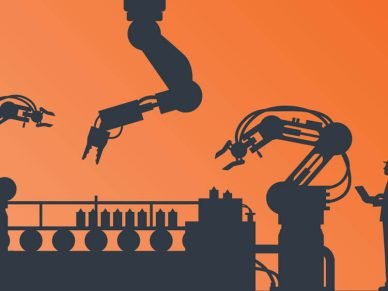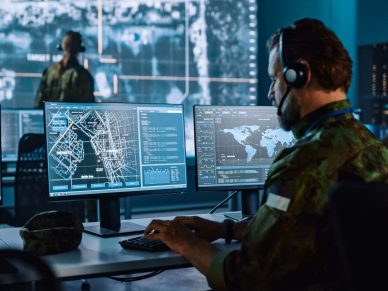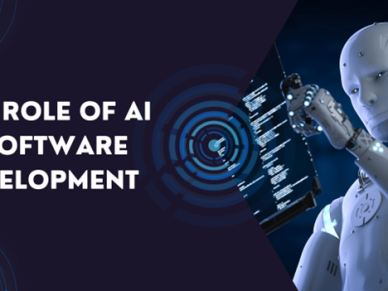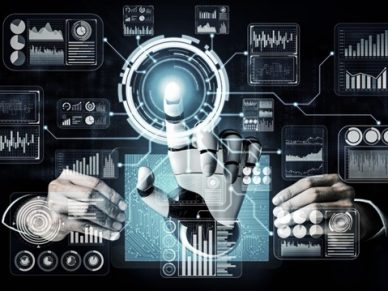From the promising to the problematic, we take a look at some of the most remarkable retail experiences ahead.

At San Francisco’s Cafe X, your scrumptious low-fat, no whip latte comes without a wait, a cashier, or a person who scrawls your name on the side of your cup in Esperanto. We’re not talking vending machine coffee: the Cafe X robot barista brews varied roasts from Peet’s, Verve, and Intelligentsia, and for prices lower than Starbucks.
In a handful of Schnuck’s grocery stores in metro St. Louis, robots move through the aisles multiple times each day making sure the shelves are stocked, and retrieving and processing inventory data in real time with pinpoint accuracy.
Tally, developed by Simbe Robotics, uses its cloud-powered software platform and API to do what the best of today’s retail technology should: eliminate repetitive, low-value, and error-prone tasks to increase customer satisfaction, guarantee accuracy, reduce operating costs, and enable the human beings freed from those duties to learn, progress, and do more for their organizations and themselves.
Technology, now more than ever, is finding a place in our everyday lives. Retail businesses have taken notice of technology’s value and are using it to improve the customer experience.
Addressing the Amazon in the Room
The firestorm of speculation that’s been torching up the retail industry since Amazon’s purchase of Whole Foods is sparking visions of in-home stores where the refrigerator will present the entire inventory of Whole Foods’ produce department in the family kitchen and other fantastical improvements.
In reality, Amazon’s quest to reinvent the bricks-and-mortar retail experience hit a serious bump earlier this year when a series of technical issues delayed the opening of Amazon Go’s cashier-free store in Seattle. As of this writing, there’s no word on the street about when—or if—the 1,880-foot flagship venue will open to the public.
Despite the savvy merging of machine learning, AI, and computer vision aimed at delivering a fast and hassle free physical shopping trip, the delay signals that the glamorous merge of the bricks-and-mortar shopping experience with advanced technology may not be just around the corner.
Don’t sop up your tears with tissues from Amazon Prime just yet. The transformative power of the customer data that will be synthesized from the two giants is massive. That wellspring of data is fundamentally necessary to create an otherworldly customer experience with AI and machine or deep learning.
News of Amazon’s entry into the $50 billion DIY auto parts market shot the stock prices of the sector’s biggest players down the tubes earlier this year. According to the New York Post, which broke the story, Amazon has struck supply contracts with some of the largest parts makers including Federal-Mogul Holdings Corp FDML.O, Dorman Products Inc, Robert Bosch GmbH, and Cardone Industries Inc.
While some analysts don’t expect the move to disrupt the market to a truly remarkable extent, it has sparked plenty of speculation about Amazon’s strategy for vehicle sales, but that spark may not catch. A Bloomberg survey found that the “trust factor” just isn’t there for vehicle buys, citing the absence of brand loyalty and personal interaction. Another speed bump? The reluctance on the part of many financing companies to accept digital signatures, citing the possibility for fraud.
The Holodeck Mall

Imagine walking down the street past someone wearing a jacket that catches your eye. With one look, your augmented reality sunglasses engage the embedded sensors in the jacket’s fabric and sends all the information you need—sizes, colors, price and delivery options—to your smartphone, where you purchase it with a tap without missing a step.
PayPal is moving closer to making that scenario a reality. The electronic payment pioneer has filed a patent for the development of augmented reality (AR) technology that will let consumers buy what they see as they see it.
According to Upload, who initially reported the story, the technology enables human engagement with a specific object. They note that because the patent has no provision for the creation of a headset, that may open the doors for VR hardware manufacturers to create new styles of equipment to go with the system.
Walmart’s dive into immersive technologies may be taking place behind the scenes, but it’s helping to reshape one of retail’s costliest aspects: employee training. At 30 Walmart Academy training centers, virtual reality (VR) recreates scenarios that aren’t easy to replicate in the classroom or field, such as managing Black Friday mayhem.
The VR component enhances training’s effectiveness, inspires higher levels of employee engagement, and eliminates the need for certain facets of real-time in-store training that may detract from customers’ shopping experiences.
Using VR technology from Strivr, Walmart joins a cadre of sports teams who successfully use the technology to perfect their players’ performance on the field, the ice, or the pitch. Walmart plans to roll out the program to the remainder of their training academies by the end of 2017.
Shopping in Close Proximity

Proximity marketing technologies aren’t exactly new, but the way retailers are employing them are. With a generation of millennial shoppers affixed to their smartphones, and a generation of digital natives about to flex their purchasing power, proximity technologies give retailers an opportunity to capture attention and steer customers to buy.
Data from Flurry Analytics shows that Americans spend five hours every day on their mobile devices, which equates to valuable hours retailers can use to pitch products and encourage purchases. With beacon technology, retailers can virtually shine a light on the products and services customers seek via smartphone.
According to Shopify, beacons enable a more personalized connected shopping experience, alerting shoppers to sales, product suggestions, and coupons tailored to match their personal preferences. Beacon technology also helps compensate for sales associates who may go on walkabout the moment a customer needs them by giving directions to a particular aisle or department, or offering a detailed product description.
User Control With NFC Tech
But what of the consumer frustrated by the frequency of push notifications? Thanks to near field communication (NFC) technology, retailers can woo these customers with ease. When two NFC devices touch, information is instantly transferred from one device to the other. A product label embedded with an NFC sensor transmits a host of product information to the consumer with a tap. The best part for independent-minded consumers? They choose which products to investigate without being directed to do so.
NFC gives retailers the customer data they seek and allows them to create targeted programs that develop deeper levels of customer engagement and loyalty, thus leading to increased sales.
Advanced sensor availability allows manufacturers to embed NFC chips into virtually any physical product, opening up a new world of retail communication.
The Path from Desire to True Insight

These groundbreaking retail technologies are fueled by the most precious commodity of all: data. The C-suite intimately knows where improvements need to be made, from inventory management to pricing, promotion, and delivery. What some may not have a firm grasp on is how to leverage their data to get them to the point where a novel technology may be successfully applied to help them meet their objectives.
The ultimate task for CEOs navigating into the connected world is to be sure that their investments in technology are based on high-quality data. A 2016 KPMG survey found that 83 percent of retail CEOs worry about the quality of the data upon which they base their business decisions.
Retail Chief Data and Analytics Officers must be given the wherewithal to interact with and influence every aspect of the retail sphere to make sure their data is accurate, meaningful, and applicable to the needs of the business. That’s a tall order, and may be retail’s biggest technology challenge of all.













